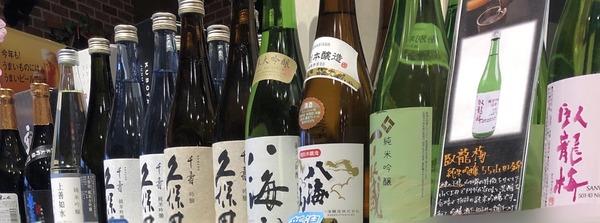
Sake, the iconic Japanese rice wine, has captured the hearts of enthusiasts around the world. However, preserving its unique flavors and quality can be a challenge, particularly for those unfamiliar with the proper storage techniques. Whether you're a sake novice or a seasoned aficionado, understanding how to store both unopened and opened bottles of sake is crucial for enjoying this exquisite beverage at its best.
Understanding Sake Storage
Why Proper Storage Matters
Sake is a delicate beverage that can be significantly affected by light, temperature, and air. Proper storage helps maintain its quality, flavor profile, and longevity. Incorrect storage can lead to premature aging, flavor deterioration, or even spoilage.
Key Factors in Sake Storage

- Temperature: Consistency is key. Fluctuations can accelerate aging and affect taste.
- Light: UV rays and bright light can degrade sake, altering its flavor.
- Humidity: While not as critical as wine, moderate humidity can help prevent cork drying (for those few sakes that use corks).
- Orientation: Store sake bottles upright to minimize contact between the sake and the air in the neck, reducing oxidation.
Storing Unopened Sake
The goal with unopened sake is to preserve its original quality. Here’s how:
- Cool, Dark Place: Store in a cool, dark cabinet or closet away from direct sunlight and sources of heat. Ideal temperatures range between 5°C to 15°C (41°F to 59°F).
- Steady Temperature: Avoid areas where temperature fluctuates, like near ovens, windows, or exterior walls.
- Upright Position: Keep bottles standing to minimize oxidation risk.
Storing Opened Sake
Once opened, sake begins to oxidize, which can quickly alter its taste. To enjoy your sake for as long as possible:
- Refrigerate After Opening: Opened sake should be refrigerated and tightly sealed. Use a special sake stopper if available; otherwise, the original cap will suffice.
- Consume Promptly: Best enjoyed within a few days, though some sakes can last up to a week or two without significant quality loss.
- Consider Transfer: For longer storage, consider transferring the sake to a smaller, airtight container to reduce air exposure.
Special Considerations
Seasonal and Premium Sakes
Some sakes, particularly namazake (unpasteurized sake) and premium grades like daiginjo, have more delicate profiles and may require extra care, such as lower storage temperatures.
Long-Term Storage
While most sakes are best enjoyed fresh, certain aged sakes (koshu) can withstand—and even benefit from—long-term storage under proper conditions.
Creative Uses for Sake That's Past Its Prime
Cooking with Aged Sake

If you find yourself with sake that has lost its prime flavor, fret not, as it can still be repurposed in delightful ways. Cooking with sake is a fantastic way to infuse dishes with a unique depth of flavor. Whether it's used in marinades to tenderize meats, added to soups and broths for an extra layer of umami, or incorporated into sauces and dressings, stale sake can elevate your culinary creations. The alcohol burns off during the cooking process, leaving behind a rich, nuanced taste that can't be replicated with any other ingredient.
Sake Baths: A Luxurious Twist

Another creative use for sake that's past its prime is creating a sake bath. This traditional Japanese practice, known as "sake-buro," involves adding a generous amount of sake to your bathwater. It's believed to moisturize the skin, improve circulation, and even help detoxify the body. The amino acids in sake promote softer, smoother skin, making this an indulgent way to relax and rejuvenate, all while putting to good use that sake which is no longer ideal for drinking.
Summary: Maximizing Your Sake Experience
Proper storage of sake, whether unopened or opened, is essential to preserving its quality and enjoying the full spectrum of its flavors. By controlling temperature, light, and air exposure, you can ensure your sake remains as delightful as the day it was brewed. Whether you're savoring a casual bottle or a rare find, the right storage practices will enhance your sake experience.
Sake Storage FAQs
Can I store sake in the freezer?
Short-term freezing is generally safe for unopened sake, but it's not recommended for long periods as it can dull the flavors.
How do I know if my sake has gone bad?
Changes in color, clarity, or a sour, off-putting smell are indicators that the sake has spoiled and should not be consumed.
By adhering to these storage guidelines, you'll ensure that each sip of sake is as enjoyable as intended, preserving the craftsmanship and tradition that goes into its production.
